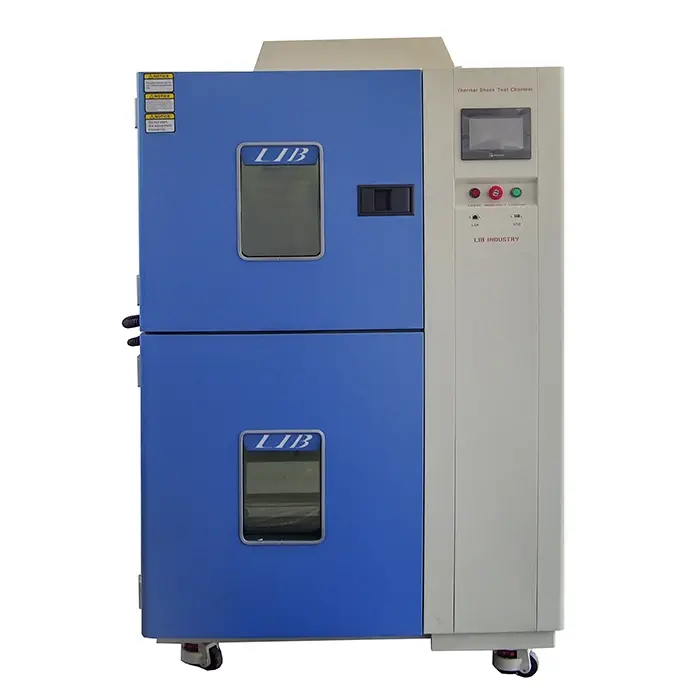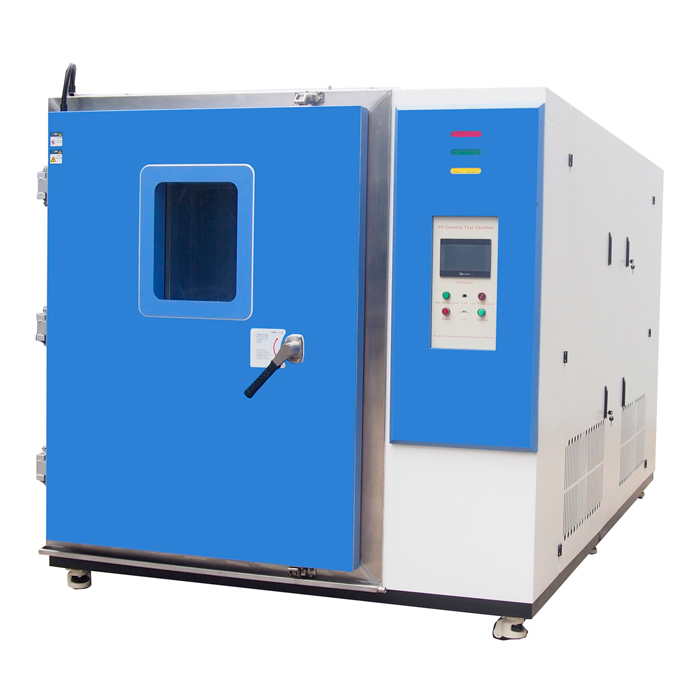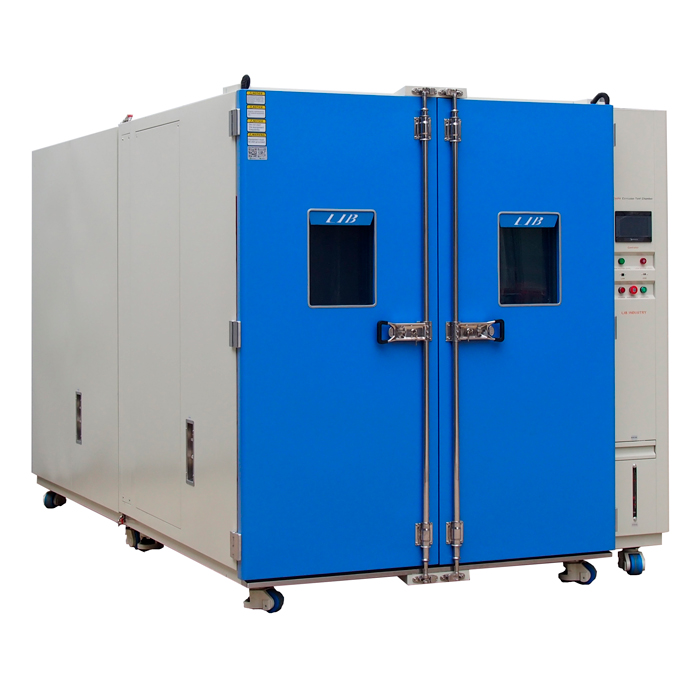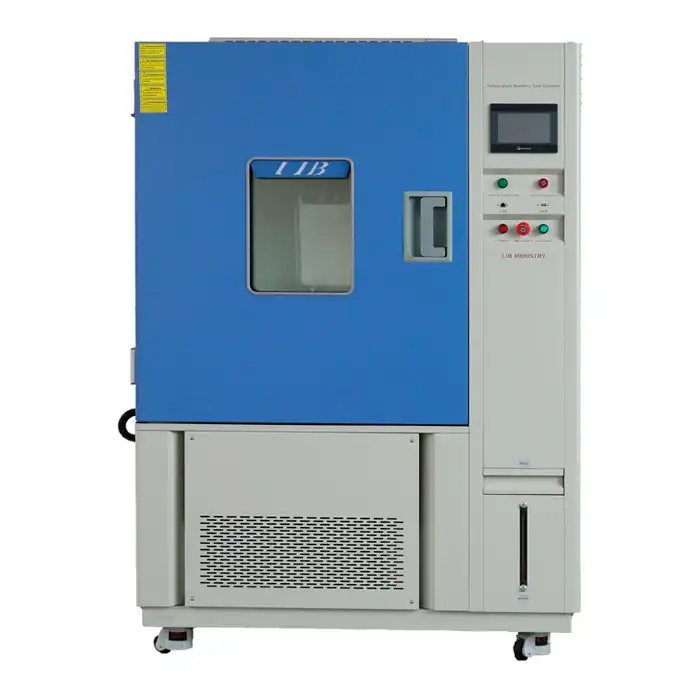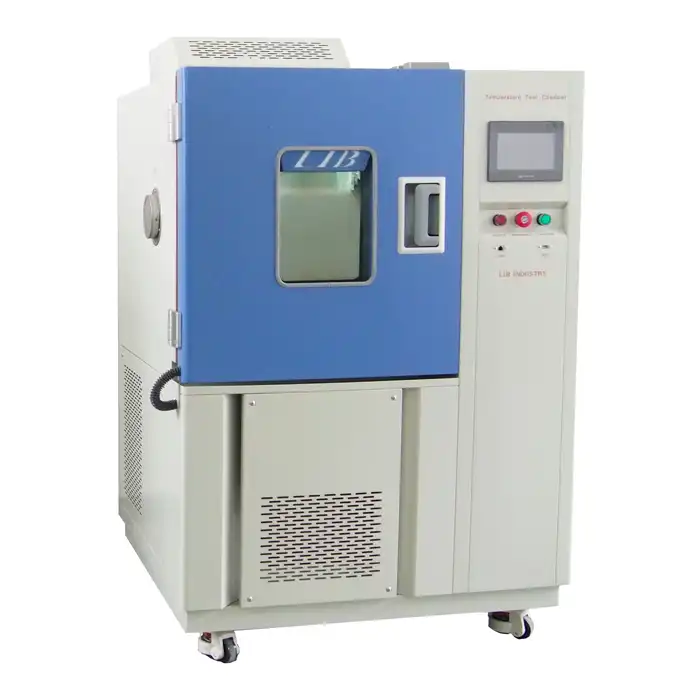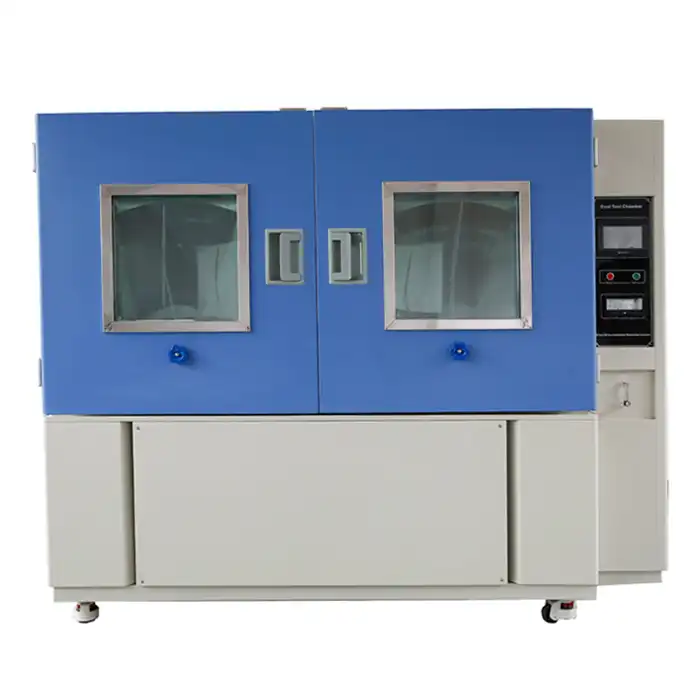Features of Solar Panel Environmental Chamber
Designed to simulate diverse environmental conditions, solar panel testing solution ensures solar panels meet global performance and durability standards. Below, we'll dive into the key features that make solar panel environmental chambers the ultimate tool for solar panel testing.

Precise Temperature and Humidity Control
One of the standout features of a solar panel environmental chamber is its ability to maintain precise temperature and humidity control. Solar panels are often exposed to extreme weather conditions, ranging from scorching heat to freezing cold, as well as fluctuating humidity levels. With these chambers, manufacturers can simulate these conditions accurately to assess how the panels perform over time.
Advanced temperature systems in the chamber can operate across a broad range, typically from -70°C to 150°C, while humidity control systems can regulate levels between 10% and 98%. This precision ensures that manufacturers can test for potential issues such as thermal expansion, material degradation, and moisture penetration. For example, a solar panel tested under controlled humidity conditions can reveal how prolonged exposure to high moisture affects its electrical performance.
Advanced Monitoring Systems
Modern solar panel environmental chambers come equipped with advanced monitoring systems to provide real-time data collection and analysis. These systems allow manufacturers to track critical parameters such as temperature, humidity, pressure, and panel performance during testing.
State-of-the-art sensors and data loggers integrated into the chambers ensure that every detail is recorded with high accuracy. For example, if a solar panel starts experiencing micro-cracks under stress during a temperature cycle, the monitoring system can immediately detect the change and provide valuable insights into the failure mechanism.
Additionally, many chambers feature remote monitoring capabilities, allowing operators to access data and control the testing process from anywhere. This level of automation and monitoring not only improves efficiency but also enables manufacturers to make data-driven decisions to enhance product quality.
Customizable Environments
Another critical feature of solar panel environmental chambers is their ability to create customizable testing environments. Different geographic locations expose solar panels to unique environmental challenges, such as desert-like conditions with high heat and sand exposure or freezing arctic regions with snow and ice.
Manufacturers can customize the chamber settings to replicate these specific conditions, enabling them to test their panels for region-specific durability. For example, a solar panel intended for use in desert regions can be tested for resistance to high temperatures, UV radiation, and sand erosion within a single chamber.
Moreover, chambers can simulate dynamic conditions such as temperature cycling or rapid changes in humidity to mimic real-world scenarios. This level of customization ensures manufacturers meet varying international standards and address the diverse needs of their global customers.
Robust Construction and Design
Durability and reliability are at the core of every solar panel environmental chamber, thanks to their robust construction and innovative design. These chambers are built to withstand the rigors of continuous testing while maintaining peak performance.
High-strength materials such as corrosion-resistant stainless steel are commonly used for both the interior and exterior construction to ensure longevity. The chamber doors are designed with airtight sealing to prevent any loss of controlled conditions, ensuring accurate and repeatable results.
Additionally, the ergonomic design of solar panel environmental chambers prioritizes ease of use, with features like user-friendly control panels, large viewing windows, and adjustable shelving to accommodate solar panels of different sizes. Such thoughtful design ensures that these chambers provide consistent performance and meet the demanding requirements of solar panel testing.
 | Temperature Range: -60℃ ~ +100 ℃ Temperature Fluctuation: ± 0.5 ℃ Temperature Deviation: ± 2.0 ℃ Humidity Range: 20% ~ 98% RH Humidity Deviation: ± 2.5% RH Temperature Change Rate: 1 ~ 3.4℃ / Min Panel Size: 1M*2M Panel Capacity: 4 / 6 / 8 / 10 / 12 Pieces |
Automated Testing Procedures
Efficiency is crucial for manufacturers, and automated testing procedures in solar panel environmental chambers streamline the testing process. Automation allows solar panels to undergo a wide range of tests with minimal human intervention, saving time and reducing the risk of errors.
For example, a chamber can be pre-programmed to execute complex testing protocols such as thermal cycling, UV exposure, and salt spray testing in a sequential manner. This ensures that panels are tested comprehensively without the need for constant manual adjustments.
Automated systems also allow for repeatable test conditions, which is essential for ensuring consistency in results. This is especially important for manufacturers looking to meet stringent international standards such as IEC 61215 and UL 1703.
Investing in a reliable solar panel environmental chamber ensures that manufacturers can meet global quality standards, reduce product failures, and enhance customer satisfaction. If you're looking for a comprehensive solution for solar panel testing, LIB Industry offers state-of-the-art environmental chambers tailored to meet your specific needs. Contact us today at ellen@lib-industry.com to learn more about how our testing solutions can empower your manufacturing process and improve your product quality.
References
1. “Environmental Testing Standards for Solar Panels: IEC 61215 and IEC 61730,” International Electrotechnical Commission.
2. “The Role of Environmental Chambers in Solar Panel Testing,” Renewable Energy Research Journal.
3. “Advancements in Environmental Chamber Design and Automation,” Journal of Environmental Testing Technology.
4. “Understanding the Impact of Temperature and Humidity on Solar Panel Performance,” Solar Energy Materials and Testing Handbook.



